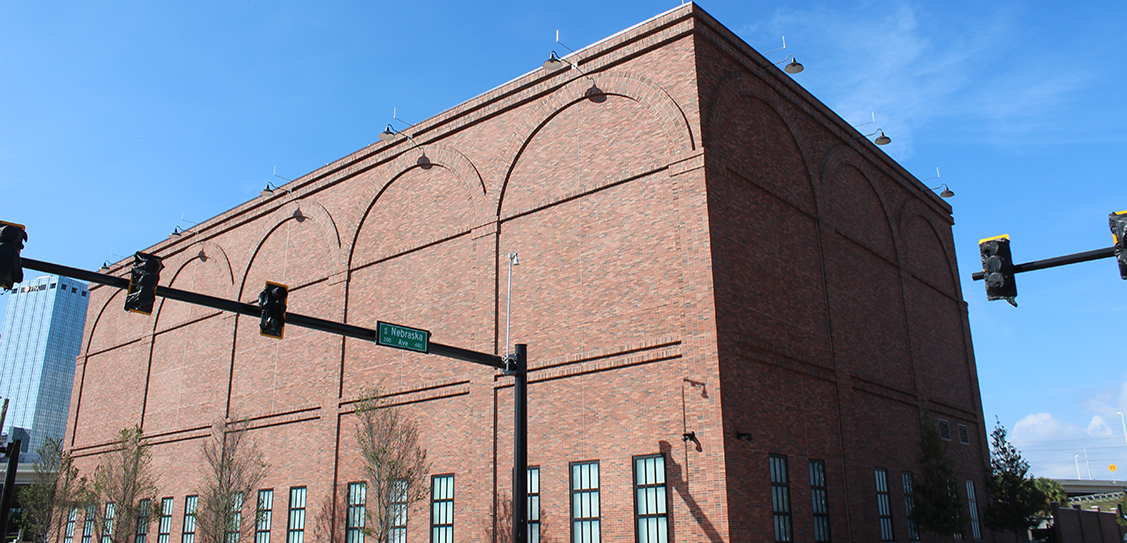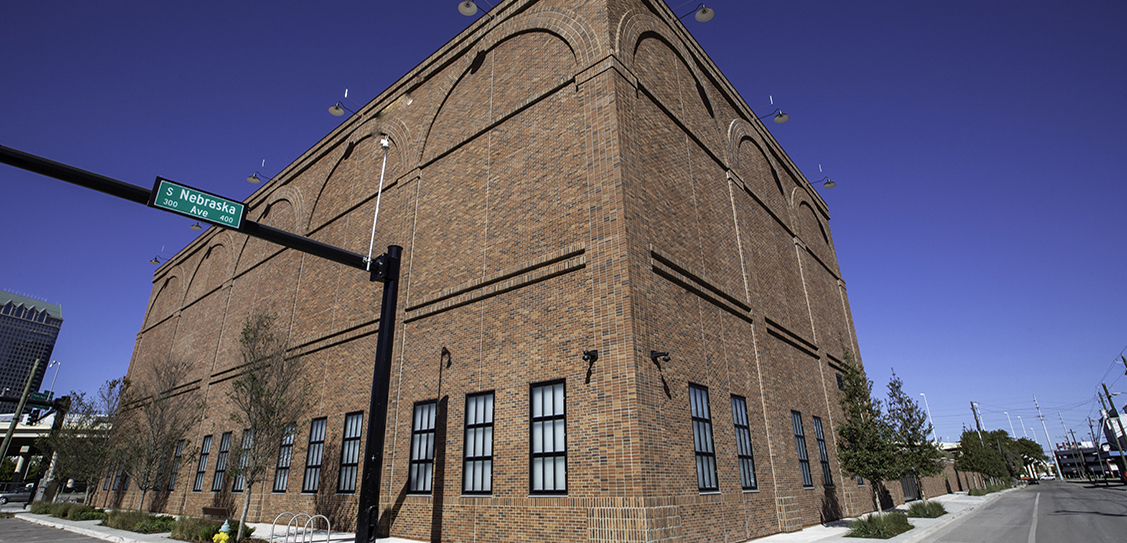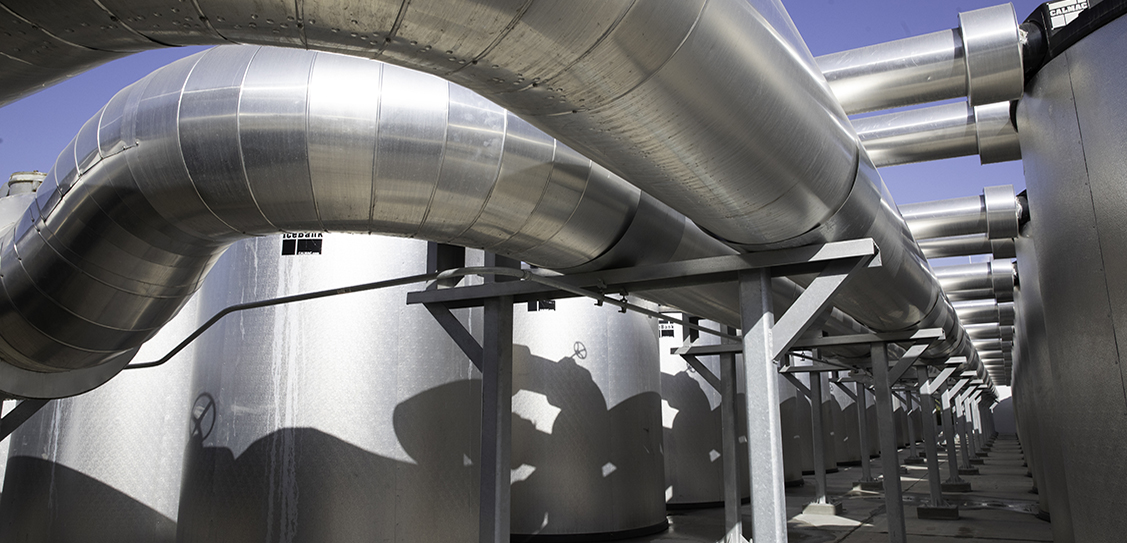Located in the new waterfront neighborhood of Water Street Tampa, Florida, an innovative new district cooling facility is helping reduce the 56 acre development's carbon footprint on a massive scale while also recycling millions of gallons of water per year. This new building frees up rooftops and coveted streetscapes by centralizing water production for this sprawling new neighborhood; giving 13 acres of public space back to the local community.
Designed by Florida based architecture firm Baker Barrios, the 12,500ft² district cooling plant centralizes cooling infrastructure for Water Street Tampa, the development transforming and reconnecting Tampa's downtown and waterfront. By placing chiller systems in a single place, this new plant reduces redundant mechanical systems on individual buildings and lessens energy consumption, making it upwards of 30- to 40-percent more efficient than traditional building chiller systems. It also frees rooftops that would typically include individual cooling towers to instead make roofs throughout the neighborhood available for use as shared amenity spaces, such as rooftop bars, restaurants, pools, office terraces and more.
As the first anticipated WELL certified neighborhood in the world, designated by the International WELL Building Institute, Water Street Tampa has been designed from scratch to promote healthier living for neighborhood residents, through policies and design strategies that increase access to drinking water and fresh food, build with sustainable materials, provide space for alternate forms of transportation, dim lights at night and much more. The new district cooling plant contributes to these wellness and sustainability focused initiatives by creating resilient neighborhood infrastructure and reducing noise levels throughout the community. District Cooling also saves on electricity and recycles water use; by capturing condensation from the buildings underground, the plant redistributes water internally through nearly two miles of steel piping and results in saving millions of gallons of water annually.
In addition to giving back to the environment and the community, the functional building is also aesthetically pleasing in its careful, contextual design. Honoring Tampa's storied past, the striking plant is comprised of concrete masonry and a brick facade, offering a nod to the iconic cigar factories in nearby Ybor City. The building exemplifies a growing national trend of beautifying functional infrastructure, creating architectural gems that also serve a utilitarian purpose.
One of the largest developments currently under construction in the United States, Water Street Tampa is the $3bn privately funded, mixed use development by Bill Gates' Cascade Investments and businessman Jeff Vinik that is turning Downtown Tampa into a 24/7 neighborhood by bringing nine million square feet of new commercial, residential, hospitality, entertainment, cultural, retail and educational spaces, all connected by pedestrian oriented streets and new public spaces.



